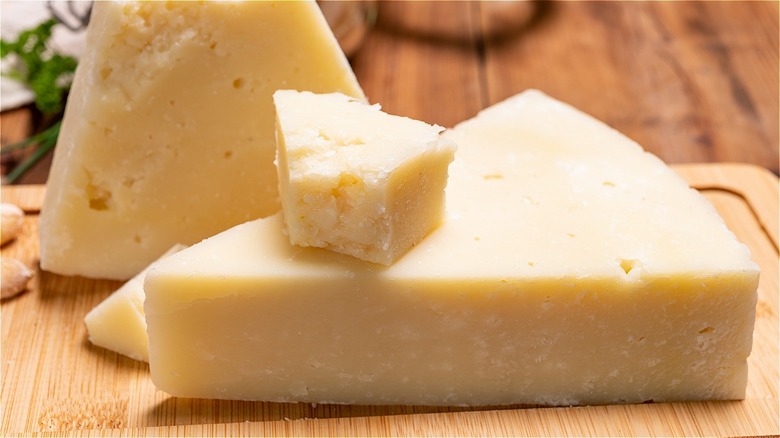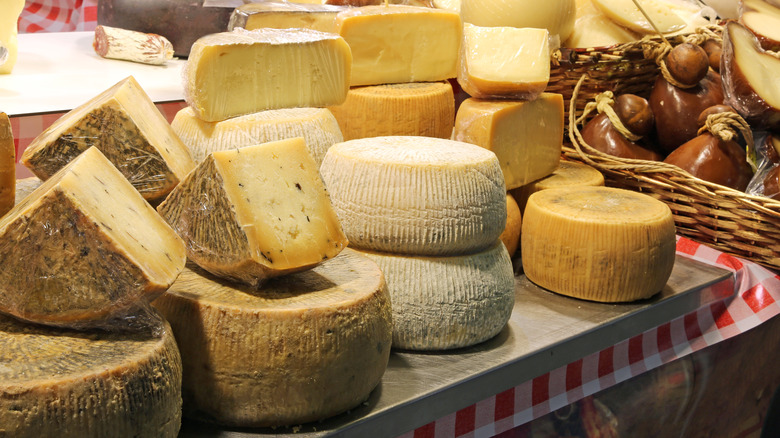Here's What Separates The Different Types Of Pecorino Cheese
We may receive a commission on purchases made from links.
How many of us are turophiles, and what does it even mean? Well, let's say that if you really love cheese, you're a true turophile. Merriam-Webster defines a turophile as "a connoisseur of cheese," so if you're familiar with cheeses from at least a few countries, you qualify for the title. The term has been around since 1938, but it gained popularity in the 1950s when a radio host and writer named Clifton Fadiman first introduced the word to his avid readers.
Nowadays, there are so many cheeses across the world that it can be hard to keep up with all the varieties. Flamingo Travels reported on some of the most popular types, such as the Mexican cotija, the French blue cheese Roquefort, the Greek feta, and, of course, the mega-popular British king of cheeses, cheddar, which comes in many forms. And let's not forget about Italy and its delicious mozzarella, taleggio, and Parmigiano-Reggiano. But Italy also boasts one of the most diverse cheeses around with its many Pecorino cheeses. Made in various Italian regions, each Pecorino features similarities but key differences. Here's how to tell them apart.
Pecorino differs in age and regions of production
According to MasterClass, Pecorino is always made from sheep's milk, and it's one of the oldest Italian cheeses. The flavors and texture depend on the age and the region of production. But how do all of these Pecorino cheeses differ? Pecorino that's only around 20 days old is defined as fresco (literally fresh). It is often mild and soft in texture, and chefs often use it in salads (per Italy Magazine). Semistagionato is aged a bit more and has a more intense flavor. Finally, stagionato can be aged up to 36 months and has a sharp and salty flavor, which is the reason why it is often grated over pasta or used in tasty sauces.
Different regions produce slightly different cheeses. Pecorino Romano (originating from Lazio and Rome) is hard, sharp, and salty. It's suitable for grating or pairing with broad beans. Pecorino Sardo from Sardinia is slightly sweet when young, and when aged for six months, it becomes sharper (via Pasta Evangelists). It's also the only one that's smoked. Pecorino Toscano from Tuscany is eaten as a slightly soft, nutty, and creamy table cheese that can be paired with honey and figs, while the matured variety is harder and usually grated. Meanwhile, Pecorino Siciliano from Sicily is milder, less salty, and sometimes enriched with pistachios or truffles. So the next time you're making risotto, pasta, or a hearty soup, and you want to elevate your dish with Pecorino, choose wisely.

